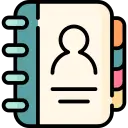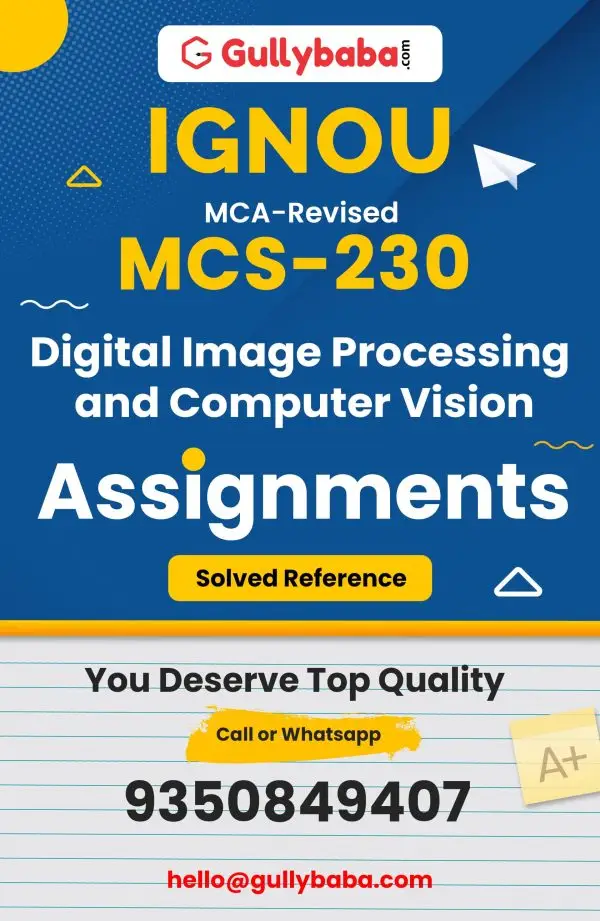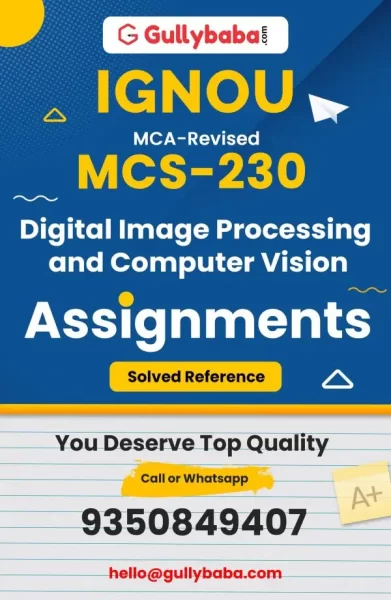PLEASE MATCH YOUR ASSIGNMENT QUESTIONS ACCORDING TO YOUR SESSION
IGNOU MCS-230 (July 2024 – January 2025) Assignment Questions
Q1: What is image acquisition? Explain Optical, Analog and Digital image processing in brief.
Q2: If the physical size of a medical image is 4 × 4 inches and the sampling resolution is 5 cycles/mm, then how many pixels per cycle are required to have a better-quality image? Will an image of size 512 × 512 be enough?
Q3: Explain the types of Images based on (i) Attributes (ii) Based on Colour
Q4: Solve the following problems:
a. What is the storage requirement for a 2024 x 2024, 24-bit colour image?
b. Calculate pixel resolution of a camera in mega pixels, capturing an image of dimension: 3000 X 4000
c. Given an image is a gray scale image with aspect ratio of 8:2 and pixel resolution of 1000000 pixels, calculate the dimensions and the size of the image.
Q5: Explain how image enhancement is better in the frequency domain as compared to spatial domain.
Q6: Explain the following Smoothing Filter(s):
(i) Ideal Low Pass Filters (ILPF) (ii) Butterworth Low Pass Filters (BLPF) (iii) Gaussian Low Pass filters (GLPF)
Q7: Explain the following Image Sharpening Filter(s):
(i) Ideal High Pass Filters (ILPF) (ii) Butterworth High Pass Filters (BLPF) (iii) Gaussian High Pass filters (GLPF)
Q8: Explain Mean Filters, and Median Filter with the help of a suitable example for each.
Q9: Transform the RGB cube by its CMY cube. Label all the vertices. Also, interpret the colours at the edges with respect to saturation.
Q10: Explain optical flow, in context of motion perception in computer vision. (5 Marks)
Q11: Explain epipolar geometry with the help of a suitable diagram in stereo vision system.
Q12: What is camera calibration? Explain how it helps to estimate the intrinsic and extrinsic parameters of a camera.
Q13: Explain K-means clustering methods with the help of a suitable example. Also, discuss the advantages and disadvantages of k -means clustering methods.
Q14: Perform partitional clustering using Frogy’s method for the data given in the table below with k-2 (two clusters). Use first two sample points (3,3) and (6,8) as seed points.
Q15: Explain agglomerative hierarchical clustering and its types with the help of a suitable example.
Q16: Explain Bayes classifier with the help of a suitable example. Also discuss its properties.
IGNOU MCS-230 (July 2023 – January 2024) Assignment Questions
Q1: Given an image is a gray scale image with aspect ratio of 6:2 and pixel resolution of 640000 pixels, calculate the following:
a) Resolve pixel resolution to calculate the dimensions of image
b) Calculate the size of the image
Q2: Consider the following orthogonal matrix A and image matrix f
Apply the orthogonal transform and its inverse
Q3: What do you understand by Image enhancement? Explain the techniques of image enhancement with a suitable example. Also discuss the advantages of image enhancement.
Q4: Compute various bit planes of the following 8-bit image.
Q5: For the given 4×4 image having grey scales between [0, 9], carry out histogram equalization. Also, draw the histogram of image before and after equalization.
Q6: Explain image degradation and its types.
Q7: Discuss Mean and Median filters with suitable examples
Q8: Consider the coordinates of warm white (0.55, 0.3) and the coordinates of deep blue (0.25, 0.15). Find the percentage of the three colours red (X), green (Y) and blue (Z).
Q9: Perform a 60° rotation of a triangle ABC with coordinates A: (0, 0),B: (1,1),C: (5,2) about the origin.
Q10: What do you mean by Camera Calibration? Explain how intrinsic and extrinsic parameters of a camera are estimated?
Q11: Explain Image segmentation. Also discuss about its applications.
Q12: What do you understand by feature extraction? What are its applications? Also discuss few traditional methods of feature extraction.
Q13: Explain how Deep Learning Techniques are used for feature extraction?
Q14: Explain Bayesian Classification with the help of a suitable example.
Q15: Explain Supervised, Unsupervised and Reinforcement learning.
Q16: Explain Agglomerative Hierarchical Clustering with the help of a suitable example













